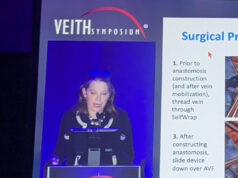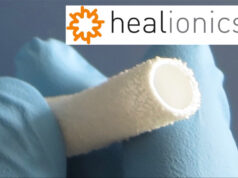
Earlier this year, in an interview with Renal Interventions, Scott Trerotola (Philadelphia, USA) remarked that “guidelines are a research workbook for the next generation”. With this statement in mind, Emma Aitken (Glasgow, UK) examines how the most recent update to the Kidney Disease Outcomes Quality Initiative (KDOQI) vascular access guidelines is likely to impact clinical research now and in the future.
The 2019 KDOQI vascular access guidelines1 provide both opportunity and concern for clinical research—opportunity to move away from the rigid era of ‘Fistula First’ to one in which it is possible to challenge the longstanding dogmas of vascular access, yet concern that ‘shared decision-making’ becomes a catch-all term to justify the lack of evidence underpinning much of our current practice.
Evidence supporting arteriovenous fistulas (AVFs) as the “gold-standard” vascular access is both historic and observational. The landmark studies are nearly 20 years old2,3 and data from randomised controlled trials (RCTs) comparing access modalities in a contemporaneous patient cohort are lacking. There are few RCTs comparing AVFs to arteriovenous grafts (AVGs), and even fewer comparing autologous access to tunnelled central venous catheters (CVCs), yet most clinicians continue to advocate for AVF as first-line for most patients.
Breaking the mould
Rigid application of long-held clinical practice guidelines, reinforced by financial reimbursement linked to AVF prevalence in patients on haemodialysis, has disincentivised participation in clinical trials—particularly trials that challenge the longstanding Fistula First doctrine and address the ‘big questions’ in our practice i.e. those comparing access modalities. Fixed beliefs and biases of both patients and clinicians further perpetuate this problem. Longstanding physician prejudices and a traditionally paternalistic approach to vascular access planning impede the expression of uncertainty where it exists. Similarly, patient advocacy groups and literature continue to promote autologous primacy at all costs, such that, often, by the time a patient consults their doctor, strong opinions have already formed.
Most of the recent RCTs aiming to compare access modalities have failed to recruit sufficient patient numbers or been halted early due to inadequate progress, at least in part because patients and/or clinicians do not perceive equipoise between the two treatment arms. The most recent, and more flexible, KDOQI vascular access guidelines have the potential to reverse this pattern by encouraging patient choice and promoting alternate treatment options. The concept of a ‘Life Plan’ also paves the way for trials of access strategy—rather than any specific access type—and allows the focus to move from access-related endpoints towards a more patient-centred approach.
Shared decision-making
Shared decision-making is a process of collaborative deliberation in the patient-physician interaction whereby healthcare professionals inform patients about the pros and cons of the available treatment options and reach an agreement on their preferred treatment plans.4 It acknowledges the existence of reasonable alternatives (AVF, AVG and CVC) and aims to inform patients, so that they can form and share their preferences—understanding that the issues of importance to patients, such as appearance or impact on day-to-day activities may not necessarily mirror those of clinicians (e.g. infection, patency).
However, it is essential that efforts to advance the evidence base are not lost under the guise of ‘patient choice’. Shared decision-making is not a justification to avoid the practice of evidence-based medicine; rather, the opportunity to participate in clinical research should be offered as part of the shared decision-making process.
Whether in pre-dialysis with excellent vessels or with a 10-year dialysis vintage having exhausted native options, it is my vision that every patient referred for vascular access creation would be offered the option to participate in a clinical trial. Only then will we be truly able to achieve ‘the right access, in the right patient, at the right time, for the right reasons’.
References:
- Lok C, Huber T, Lee T et al. KDOQI Clinical Practice Guideline for Vascular Access: 2019 Update. Am J Kidney Dis. 2020; 75(4 Suppl 2): S1–S164.
- Astor B, Eustace J, Power N et al. Type of Vascular Access and Survival among Incident Haemodialysis Patients: The Choices for Healthy Outcomes in Caring for ESRD (CHOICE) Study. J Am Soc Nephrol. 2005; 16(5): 1449–55.
- Ravani P, Palmer S, Oliver M et al. Associations between Haemodialysis Access Type and Clinical Outcomes: A Systematic Review. J Am Soc Nephrol. 2013; 24(3): 465–73.
- Murea M, Grey C, Lok C. Shared decision making in hemodialysis vascular access practice. Kidney International. 2021; 100(4): 799–808.
Emma Aitken is a consultant renal transplant and vascular access surgeon at the Queen Elizabeth University Hospital in Glasgow, UK. She has led many randomised clinical trials in the vascular access field and is currently chief investigator of the National Institute for Health and Care Research (NIHR)-funded ACCess (Anaesthesia choice in the creation of arteriovenous fistulae) study. She is also on the Renal Association’s Vascular Access Guideline Working Group.
The author declared no relevant disclosures pertaining to this article.











